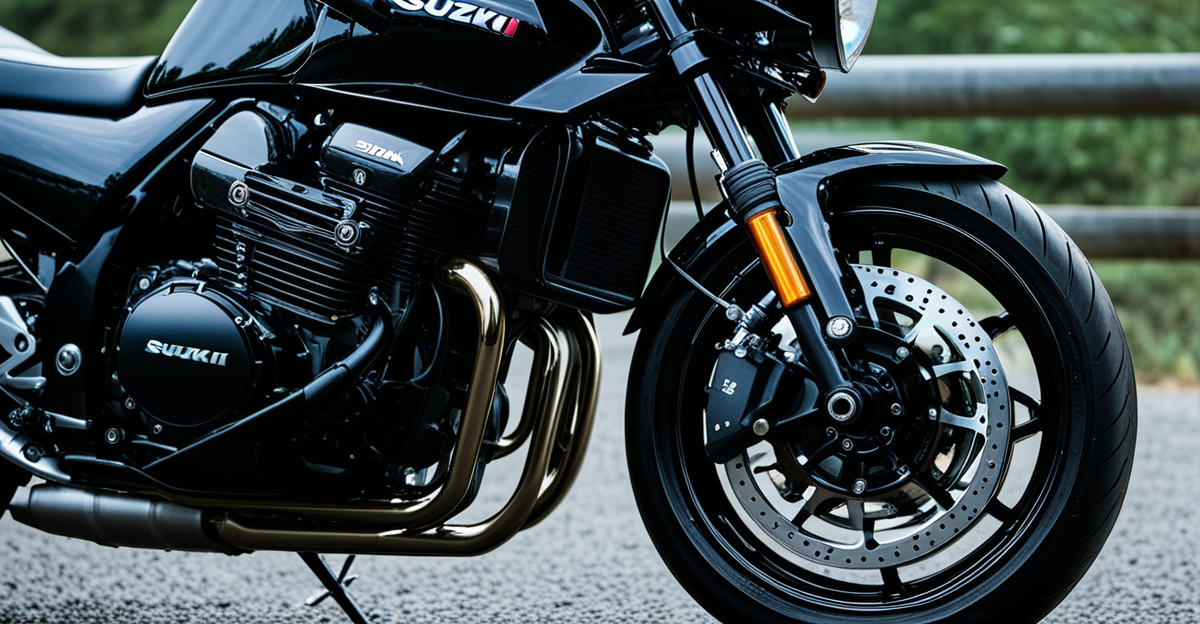Essential Cleaning Methods for Suzuki Katana Paintwork
Maintaining Suzuki Katana paint care requires a precise and gentle approach. Begin each cleaning session with a thorough rinse to remove loose dirt and prevent scratching during washing. Using a mild, pH-balanced cleaner designed specifically for motorcycle surfaces is crucial to avoid damaging the finish. Harsh detergents strip away protective layers, accelerating paint dullness.
Employ microfiber cloths or soft sponges to gently cleanse without creating swirl marks. These motorcycle cleaning techniques ensure debris is lifted rather than ground into the paint. Pay special attention to areas prone to grime buildup, such as crevices and under panels, where contaminants can deteriorate the paint over time.
In parallel : Maximize Your Ducati Panigale V4 Experience: Tailor Your Suspension for Every Thrilling Ride
Consistency in washing is a cornerstone of effective paint maintenance. Regularly removing dust, road salts, and other corrosive elements prevents paint degradation and keeps the Katana’s signature shine vibrant. Remember, skipping cleanings allows harmful residues to accumulate, increasing risk of scratches and fading.
Choosing the right cleaning products and adapting a step-by-step routine tailored for Suzuki Katana motorcycles will prolong paint life and maintain aesthetic appeal. Consistent, gentle care outperforms occasional aggressive cleans.
Have you seen this : Maximize Your Kawasaki Versys 650’s Fuel Efficiency: Essential Maintenance Tips for Peak Performance
Choosing the Right Waxing and Polishing Techniques
Selecting the best polish for Suzuki Katana paint requires attention to products formulated specifically for motorcycle finishes. Look for waxes and polishes that offer protective qualities without abrasive ingredients. These maintain the paint’s integrity while enhancing gloss. Using the wrong polish can dull or damage the paint, so prioritizing gentle, high-quality cleaning products is essential.
When applying polish, start with a clean, dry surface to ensure even coverage. Use a soft applicator pad and apply polish in thin, circular motions. Allow the polish to haze before buffing with a microfiber cloth, which helps avoid swirl marks. This motorcycle paint waxing technique ensures a radiant, long-lasting shine that protects against environmental wear.
Experts recommend polishing every 2-3 months, depending on weather exposure and riding frequency. Over-polishing can remove protective layers, whereas neglect reduces paint vibrancy. Consistency with proper polish application balances protection and aesthetics. Avoid common pitfalls such as applying polish in direct sunlight or using dirty cloths that can cause scratches, safeguarding your Suzuki Katana’s standout paintwork.
Essential Cleaning Methods for Suzuki Katana Paintwork
A precise, step-by-step cleaning routine is vital for effective Suzuki Katana paint care. Begin by thoroughly rinsing the bike with clean water to dislodge loose dirt and avoid scratches when washing. Next, use gentle, pH-balanced cleaning products specifically designed for motorcycle finishes—these maintain the protective clear coat without stripping oils or waxes.
Employing the right tools is equally important. Soft microfiber cloths or fine sponges provide a non-abrasive surface that lifts grime rather than grinding it into the paint. Avoid harsh brushes or rough materials, as these can cause swirl marks or scratches. Focus cleaning efforts on vulnerable spots like crevices and under panels, where dirt tends to accumulate and cause damage over time.
Consistency in washing cannot be overstated. Regularly removing corrosive elements such as road salts, dust, and insect residue prevents premature paint dullness. Skipping or infrequent washes allow contaminants to embed and degrade the finish. Following these motorcycle cleaning techniques preserves the Katana’s iconic shine and protects its delicate paintwork for the long haul.
Essential Cleaning Methods for Suzuki Katana Paintwork
A dedicated, step-by-step cleaning routine is fundamental for optimal Suzuki Katana paint care. Start with a gentle rinse to dislodge loose dirt and prevent abrasion during washing. Next, employ mild, pH-balanced cleaning products specifically formulated for motorcycle finishes. These cleaners preserve the clear coat and avoid stripping essential protective layers.
Incorporating the right tools enhances cleaning effectiveness. Using soft microfiber cloths or fine sponges prevents scratching by lifting contaminants instead of rubbing them into the surface. Avoid abrasive brushes or rough materials, which can cause swirl marks and degrade the paintwork.
Consistency is key. Regular application of these motorcycle cleaning techniques removes corrosive elements like road salts, dust, and insects that accelerate dullness and deterioration. Infrequent washes allow contaminants to embed, increasing the risk of paint damage over time. Focusing attention on tricky areas, such as panel edges and crevices, where deposits accumulate, further protects the Suzuki Katana’s distinctive finish.
Essential Cleaning Methods for Suzuki Katana Paintwork
Maintaining Suzuki Katana paint care starts with a consistent, methodical cleaning routine. Begin by rinsing the motorcycle gently with clean water to remove loose dirt that could scratch the surface during washing. Next, apply mild, pH-balanced cleaning products designed specifically for motorcycle finishes—these prevent damage to the clear coat and preserve protective oils.
Employ soft microfiber cloths or fine sponges throughout the process. These tools minimize abrasion by lifting dirt rather than grinding particles into the paint, an essential step in effective motorcycle cleaning techniques. Avoid harsh brushes that can cause micro-scratches or swirl marks.
Consistency in washing is vital. Regular cleaning removes corrosive contaminants like road salts, dust, and insect residues that accelerate paint dullness. Over time, neglecting these elements can embed contaminants and degrade the finish. Finally, pay attention to hard-to-reach areas such as panel edges and crevices, where dirt tends to accumulate unnoticed, increasing wear risk. Following this tailored routine significantly enhances paint longevity and keeps the Suzuki Katana’s signature gloss intact.
Essential Cleaning Methods for Suzuki Katana Paintwork
A detailed, step-by-step cleaning routine is essential for maintaining top-tier Suzuki Katana paint care. Start by rinsing the bike with clean water to remove loose particles that could cause scratches during washing. Select mild, pH-balanced cleaning products made specifically for motorcycle finishes; these preserve the protective clear coat while effectively breaking down grime. Avoid general household detergents that may strip wax or dull the paint.
During washing, use soft microfiber cloths or fine sponges, which gently lift contaminants without abrasion. These tools are critical within sound motorcycle cleaning techniques, minimizing swirl marks and scratches often caused by rough brushes or towels. Thoroughly clean hard-to-reach spots such as panel seams and underbody areas where dirt accumulates unnoticed.
Consistency is key. Regular washing prevents corrosive elements like road salts and insect residues from embedding into the paint, which accelerates fading and damage. Following this disciplined approach safeguards the Suzuki Katana’s finish, maintaining its signature gloss and ensuring long-lasting protection against environmental wear.
Essential Cleaning Methods for Suzuki Katana Paintwork
A meticulous step-by-step cleaning routine is crucial for effective Suzuki Katana paint care. Begin with a gentle rinse to remove loose dirt, minimizing the risk of scratches during washing. Employ cleaning products specifically formulated for motorcycles—these maintain the clear coat without stripping protective oils. Avoid harsh detergents that can accelerate paint dullness.
Use microfiber cloths or soft sponges throughout the process. These tools excel in lifting contaminants carefully, preventing swirl marks or abrasion common with rough materials. Focus on vulnerable areas like panel seams and undercarriage sections, where grime accumulates unnoticed.
Consistency in washing is non-negotiable to maintain brilliance and longevity. Regular removal of road salts, insect residues, and dust prevents these elements from embedding into the paint and causing deterioration. Adopting these motorcycle cleaning techniques safeguards the Suzuki Katana’s unique finish, ensuring it remains radiant while protecting against environmental wear.










